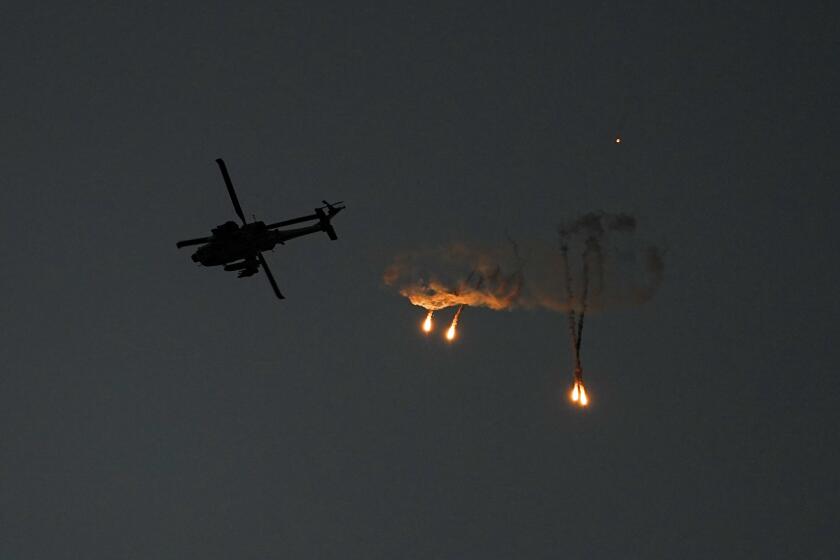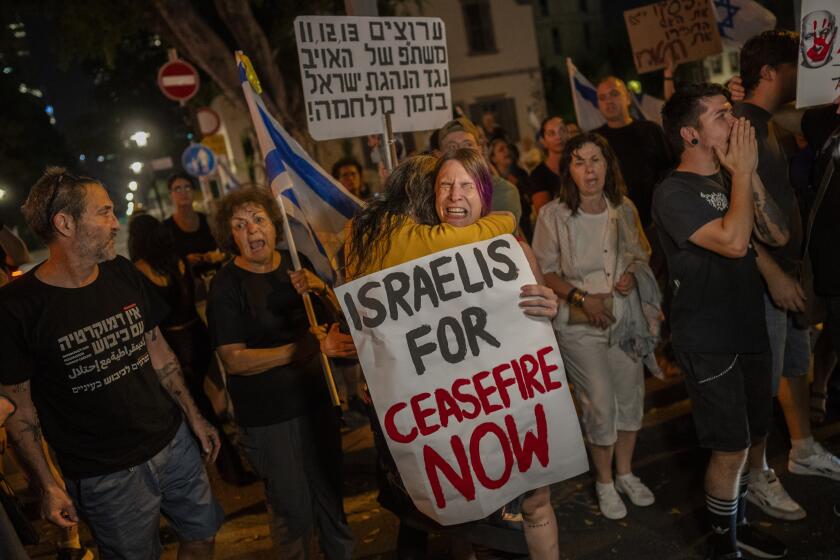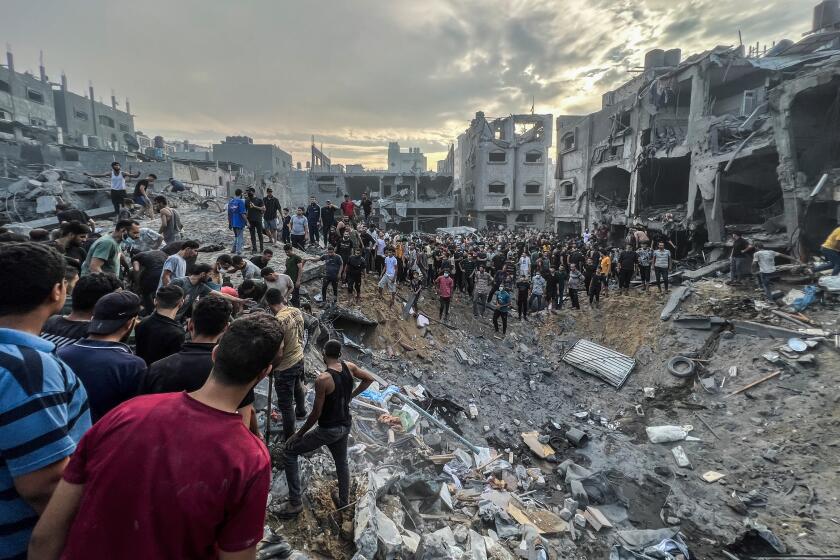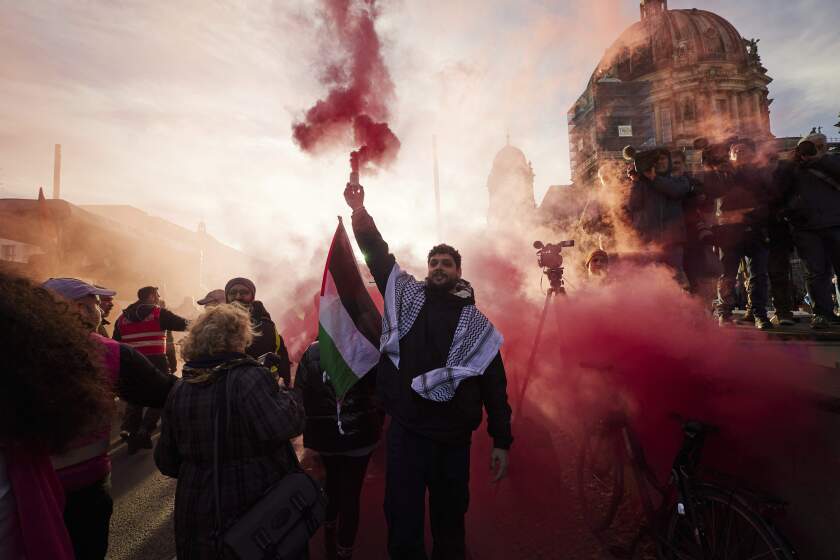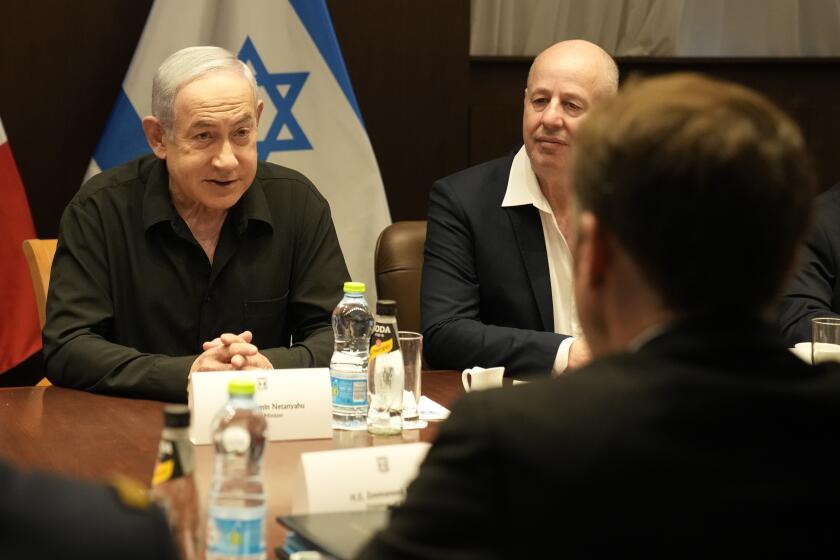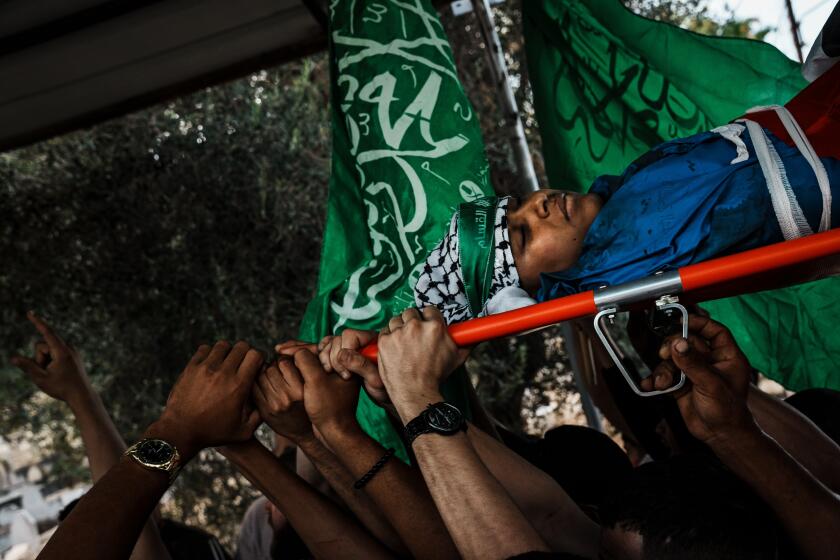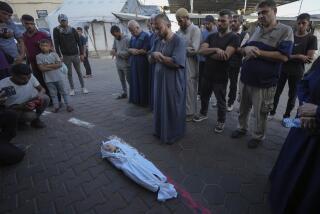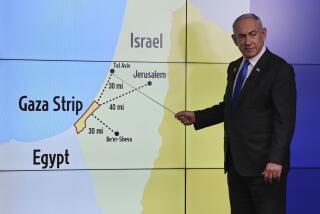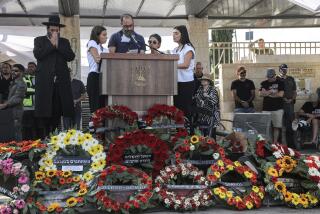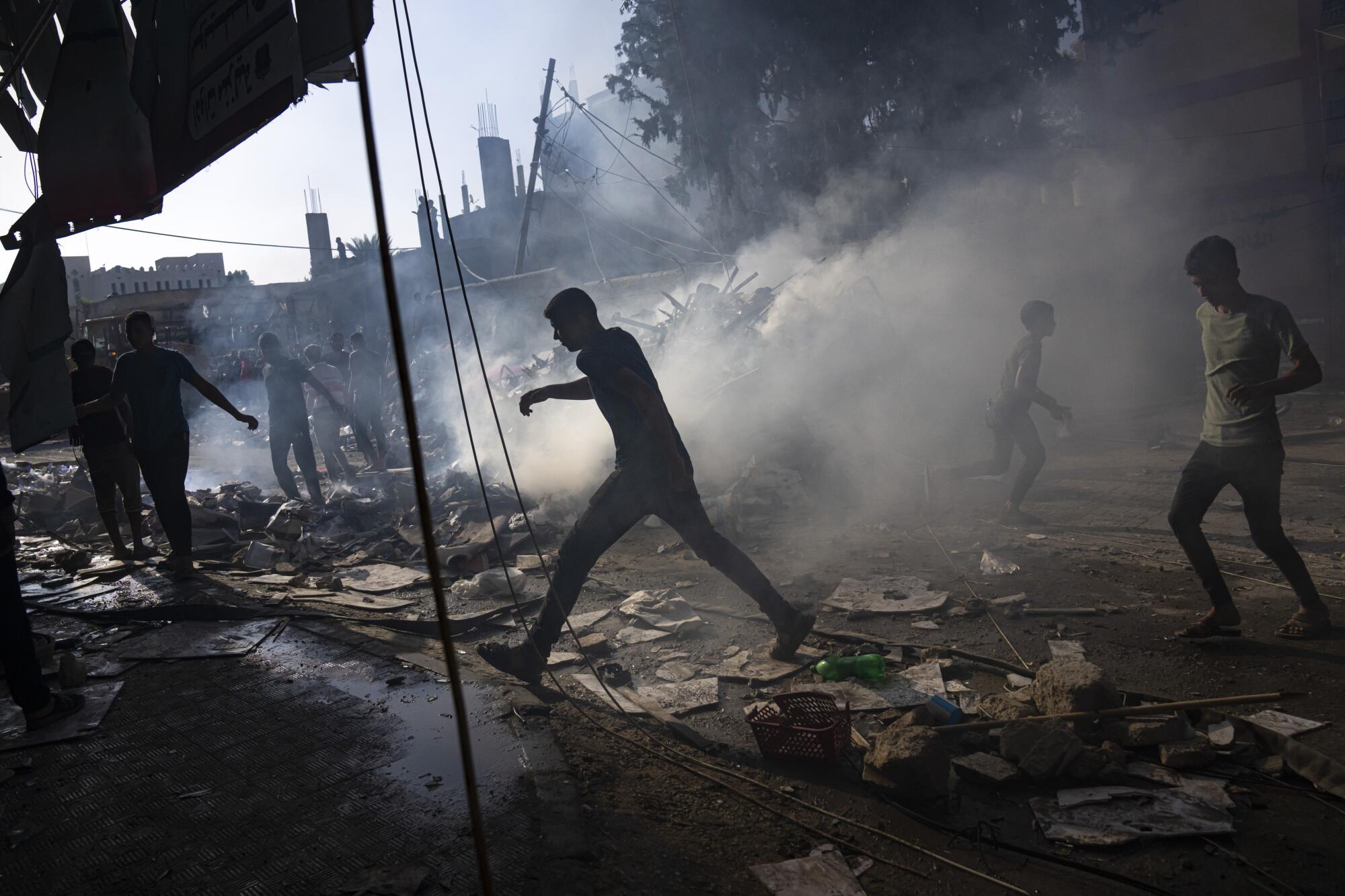
KHAN YUNIS, Gaza Strip — Israel said Tuesday that its ground forces were battling Hamas fighters deep inside Gaza’s largest city, signaling a major new stage in the month-old conflict, and its leaders foresee controlling the enclave’s security after the war.
The push into Gaza City guarantees that the already staggering death toll will rise further, while comments from Prime Minister Benjamin Netanyahu about controlling the Gaza Strip’s security for “an indefinite period” pointed to the uncertain endgame of a war that Israel says will be long and difficult.
Israeli ground troops have battled Palestinian militants inside Gaza for more than a week, cutting the territory in half and encircling Gaza City. The army’s chief spokesman, Rear Adm. Daniel Hagari, said that Israeli ground forces “are located right now in a ground operation in the depths of Gaza City and putting great pressure on Hamas.”
Hamas spokesman Ghazi Hamad, speaking Tuesday from Beirut, denied that Israeli forces were making any significant military gains or that they had advanced deep into Gaza City.
“They never give the people the truth,” Hamad said.
“The Palestinians fight and fight and fight against Israel, until we end the occupation,” said Hamad, who left Gaza days before the attack.
The Associated Press could not independently verify the claims of either side.
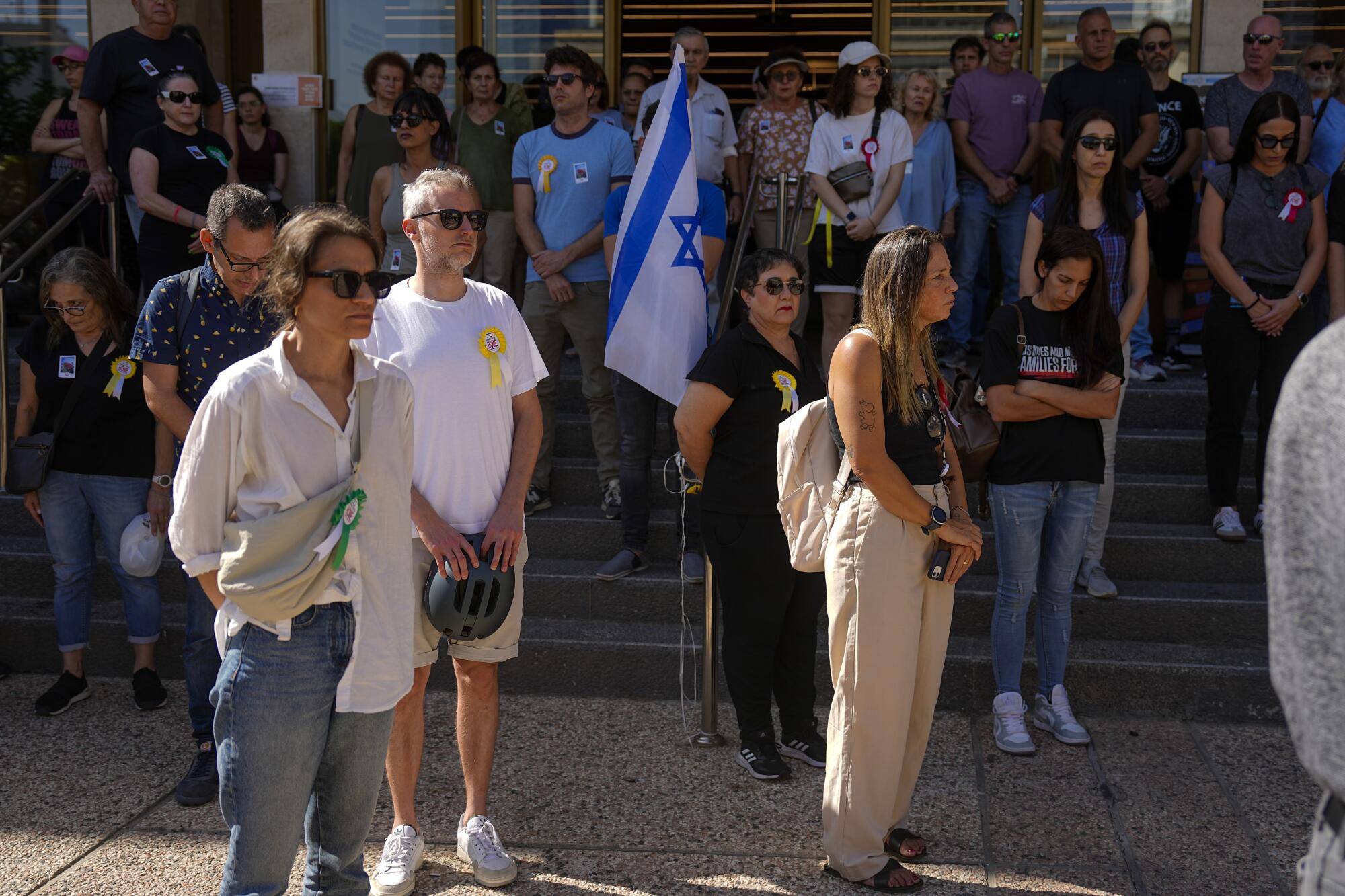
Israelis commemorated the 30th day — a milestone in Jewish mourning — since Hamas militants killed 1,400 people during an Oct. 7 rampage in southern Israel that sparked this latest war. Some 240 people Hamas abducted during the attack remain in Gaza, and more than 250,000 Israelis have evacuated homes near the borders of Gaza and Lebanon amid continuous rockets fired into Israel.
A month of relentless bombardment in Gaza has killed more than 10,300 Palestinians, two-thirds of them women and minors, according the Health Ministry of the Hamas-run territory. More than 2,300 are believed buried from strikes that reduced entire city blocks to rubble.
A Times special correspondent in Gaza offers a personal account of living in a place where nowhere feels safe.
About 70% of Gaza’s 2.3 million people have fled their homes, and many of them are crowded into United Nations schools turned into shelters. Civilians in Gaza are relying on a trickle of aid and their own daily foraging for food and water from supplies that have dwindled after weeks of Israel’s siege.
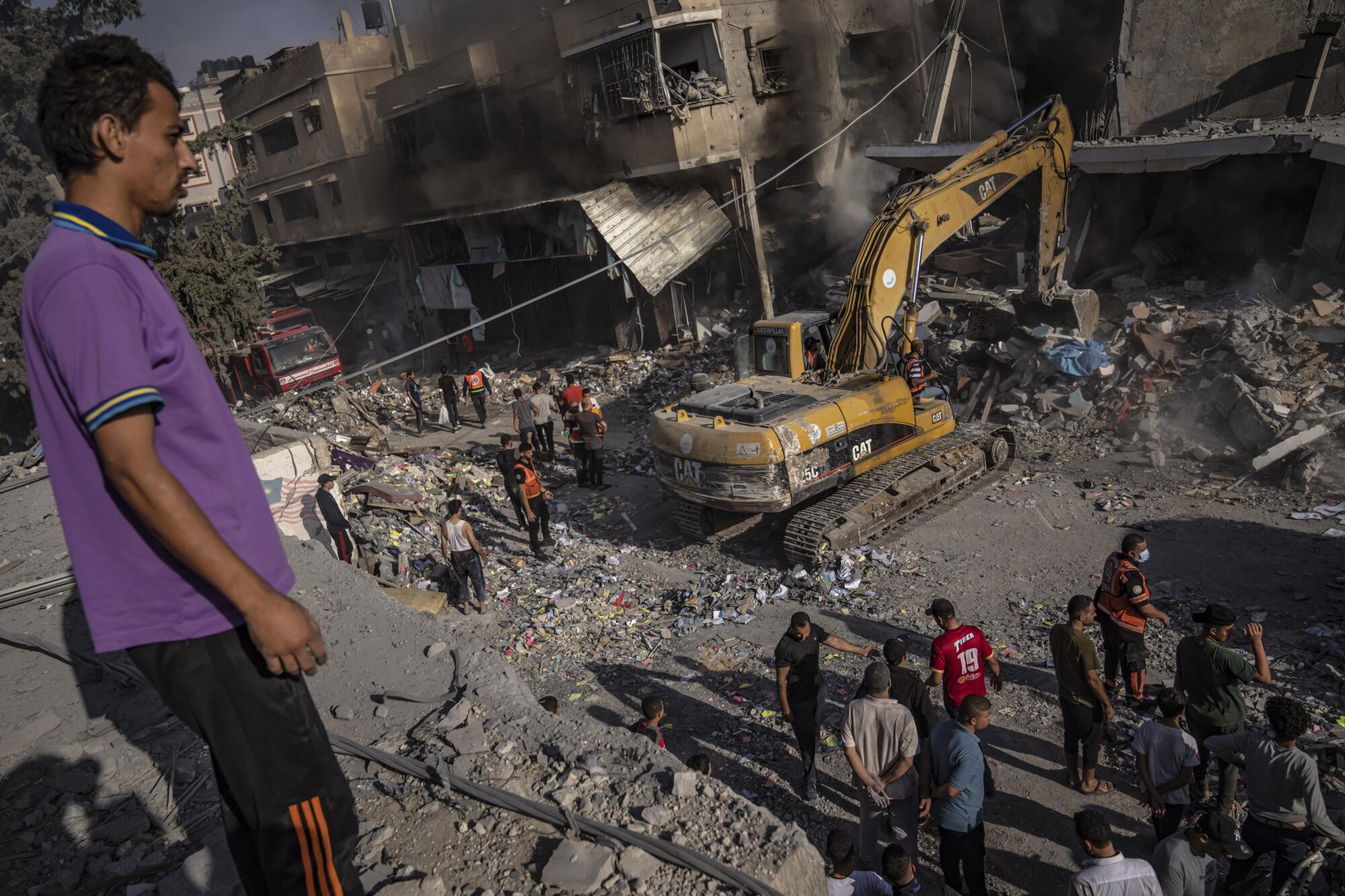
Netanyahu said in an interview with ABC News that the military had killed several thousand Hamas fighters since the war began. The death toll from the Health Ministry in Gaza does not distinguish between civilians and combatants — and slain fighters not brought to hospitals would not be in its count.
A month after Hamas’ surprise attack nearly brought Israel to its knees, the country’s battered ‘peace camp’ is rising — or trying its best to do so.
Israel unleashed another wave of strikes across the Gaza Strip on Tuesday as hundreds more Palestinians fled Gaza City to the south.
Some arrived on donkey carts, most on foot, some pushing elderly relatives in wheelchairs, all visibly exhausted. Many had nothing but the clothes on their backs.
“There is no food or drink; people are fighting in the bakeries,” said one man who didn’t want to give his name.
Hundreds of thousands have heeded Israeli orders to head to the southern part of Gaza, out of the ground assault’s path. Others are afraid to do so since Israeli troops control part of the north-south route.
But bombardment of the south has also continued.
An Israeli airstrike destroyed several homes early Tuesday in the town of Khan Yunis. First responders pulled five bodies — including those of three children — from the rubble, according to an Associated Press journalist at the scene.
Airstrikes flatten blocks of Gaza refugee camp, bringing rage, grief and a perilous new phase of war
Israel’s military says it killed a Hamas commander in devastating strikes in Jabaliya refugee camp in Gaza. Hospital chief describes ‘waterfall of casualties.’
One man wept as he carried a bloodied young girl, until a rescue worker pried her from his arms, saying, “Let her go, let her go,” to rush her to an ambulance.
AP video taken at a nearby hospital showed a woman desperately searching for her son and then crying and kissing him when she found him, half-naked and bloodied, but apparently without serious injuries. A girl sobbed next to a baby lying on a stretcher wrapped in a blanket, apparently dead.
“We were sleeping — babies, children, elderly,” said one survivor, Ahmad Najjar, who is the general director at the Education Ministry in Gaza.
Thousands of pro-Palestinian demonstrators demanding an immediate halt to Israel’s bombardment of Gaza march in Paris, Berlin and other European cities.
Israel says it targets Hamas fighters and infrastructure and accuses the group of endangering civilians by operating among them.
In the town of Deir al Balah, rescue workers brought out at least four dead and a number of wounded children from the wreckage of a flattened building, witnesses said.
“My daughter,” screamed a woman as she ran behind them.
At a school in Khan Yunis, thousands of displaced people were living in classrooms and on the playground. One woman, Suhaila al Najjar, said the last month had been filled with sleepless nights.
“What’s to come? How will we live? Bakeries have closed, there’s no gas. What will we eat?” she said.
Israel has vowed to remove Hamas from power and crush its military capabilities — but neither Israel nor its main ally, the United States, has said what would come next.
Netanyahu told ABC News that Gaza should be governed by “those who don’t want to continue the way of Hamas,” without elaborating.
“I think Israel will, for an indefinite period, will have the overall security responsibility because we’ve seen what happens when we don’t have it. When we don’t have that security responsibility, what we have is the eruption of Hamas terror on a scale that we couldn’t imagine,” he said.
Israelis fault Prime Minister Benjamin Netanyahu for security failures that set the stage for war. Few see a path to leadership change amid the crisis.
Netanyahu did not make clear what shape that security control would take. The White House on Tuesday reiterated that President Biden does not support an Israeli reoccupation of the Gaza Strip after the war.
“We do think that there needs to be a healthy set of conversations about what post-conflict Gaza looks like and what governance looks like,” said White House National Security Council spokesman John F. Kirby, adding that he would leave it to Netanyahu to clarify what he means by “indefinite.”
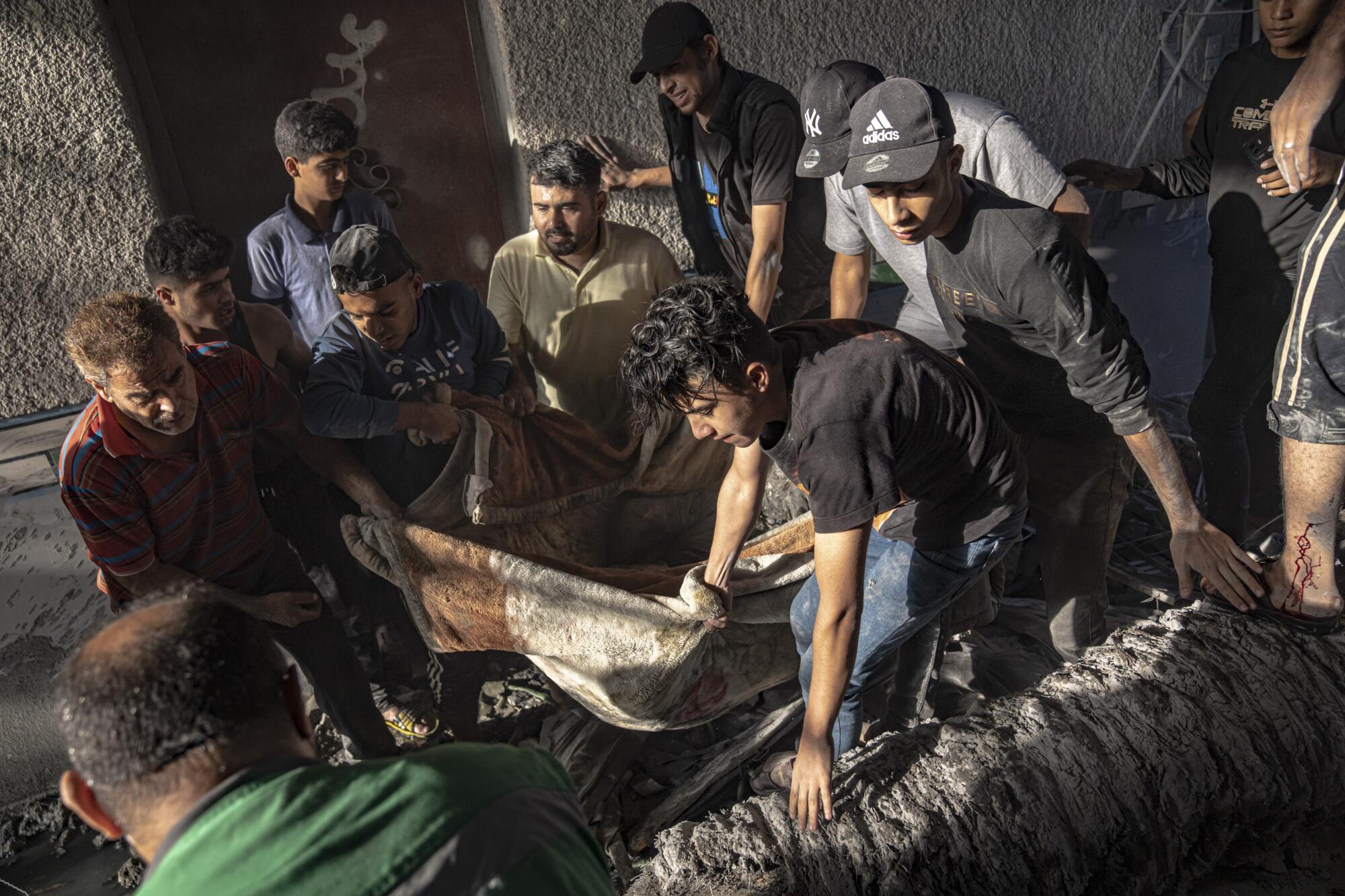
Israel captured Gaza, the West Bank and East Jerusalem — the three territories that Palestinians want for a future state — in the 1967 Mideast war.
Israel annexed East Jerusalem in a move not recognized by most of the international community and continues to occupy the West Bank. It withdrew its troops and more than 8,000 Jewish settlers from Gaza in 2005, though it has maintained control over the territory’s airspace, coastline, population registry and all but one of its border crossings.
Hamas seized power from forces loyal to Palestinian Authority President Mahmoud Abbas two years later, confining his government to parts of the West Bank.
Since then, Israel and Egypt have imposed a blockade on Gaza to varying degrees. Israel says the blockade is needed to keep Hamas from rearming, while Palestinians and rights groups see it as a form of collective punishment.
Israeli officials say the offensive against Hamas will last for some time and acknowledge that they have not yet formulated a concrete plan for what comes after the war. Israel’s defense minister has said the country does not seek a long-term reoccupation of Gaza but predicted a lengthy phase of low-intensity fighting against “pockets of resistance.” Other officials have spoken about establishing a buffer zone that would keep Palestinians away from the Israeli border.
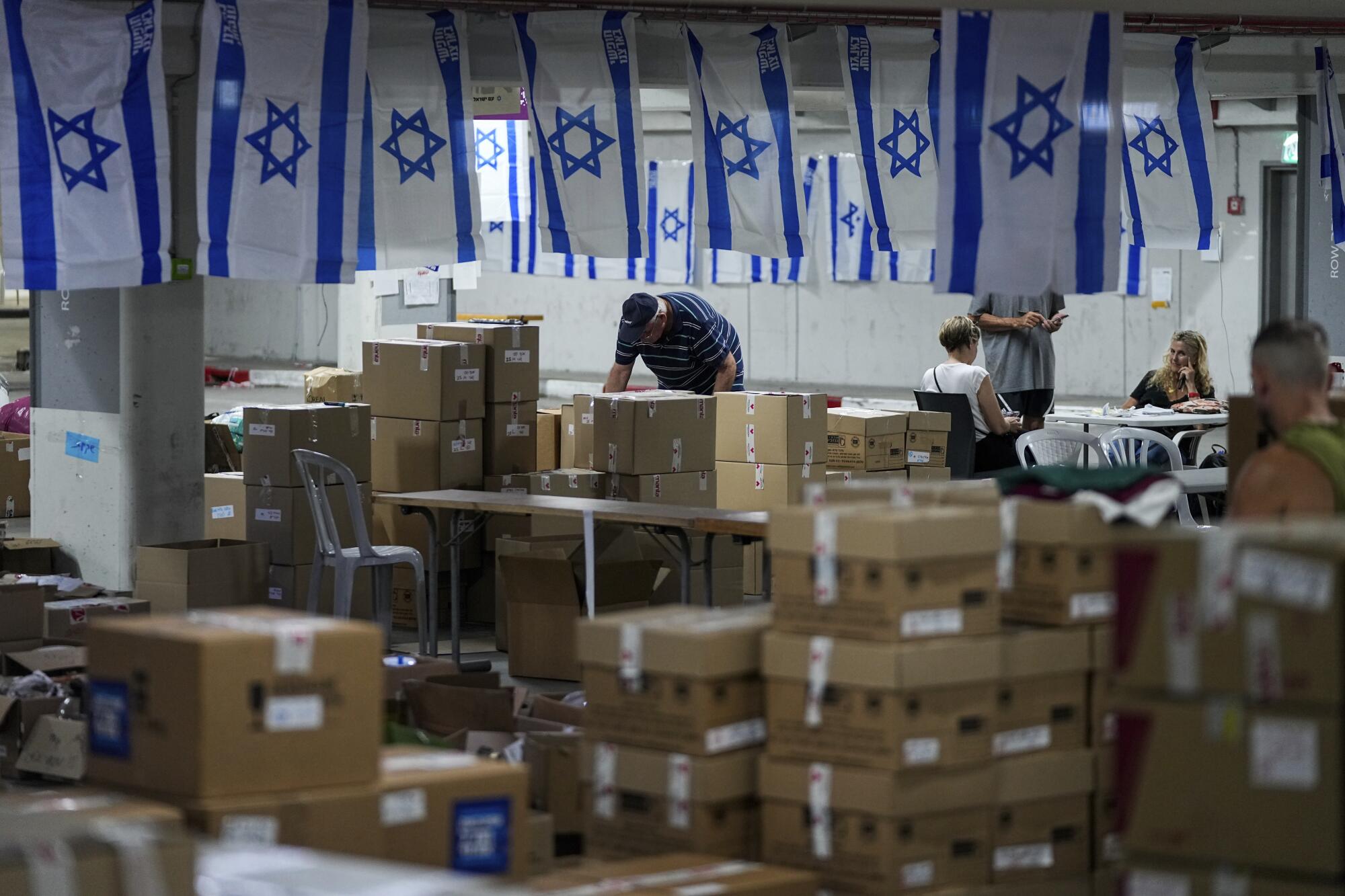
“There are a number of options being discussed,” said Ophir Falk, a senior advisor to Netanyahu, in written remarks. “The common denominator of all the plans is that 1) there is no Hamas 2) that Gaza is demilitarized 3) Gaza is deradicalized.”
In his ABC interview, Netanyahu also expressed openness for the first time to “little pauses” in the fighting to facilitate delivery of aid to Gaza or the release of hostages. But he ruled out any general cease-fire without the release of all the hostages.
For now, Israel’s troops are focused on northern Gaza, including Gaza City, which before the war was home to some 650,000 people. Israel says Hamas has extensive militant infrastructure in the city, including a vast tunnel network.
Violence surges in the West Bank as Israel increases raids to root out militants. Palestinians say the military is using the war as an excuse to crack down.
Several hundred thousand people are believed to remain in the north in the Israeli assault’s path.
Residents in northern Gaza reported heavy battles overnight into Tuesday morning on the outskirts of Gaza City. The Shati refugee camp — a built-up district housing refugees from the 1948 war surrounding Israel’s creation and their descendants — has been heavily bombarded from the air and sea over the last two days, residents said.
Marwan Abdullah, who is among thousands of people sheltering at Gaza City’s Shifa Hospital, said they heard constant explosions overnight as ambulances brought dead and wounded in from the Shati camp. “We couldn’t sleep. Things get worse day by day,” he said.
A strike early Monday hit the roof of Shifa Hospital, killing a number of displaced people sheltering on its top floor and destroying solar panels, said Mohamed Zaqout, general manager of all hospitals in Gaza. The panels have been helping keep power on in the facility, which has been reduced to using one generator because of lack of fuel.
The war has also stoked wider tensions, with Israel and Lebanon’s Hezbollah militant group trading fire along the border. More than 160 Palestinians have been killed in the occupied West Bank since Oct. 7, many during protests and gun battles with Israeli forces during arrest raids, others in attacks by Jewish settlers.
Hundreds of trucks carrying aid have been allowed to enter Gaza from Egypt since Oct. 21. But humanitarian workers say the aid is far short of mounting needs. Egypt’s Rafah crossing has also opened to allow hundreds of foreign passport holders and medical patients to leave Gaza.
More to Read
Sign up for Essential California
The most important California stories and recommendations in your inbox every morning.
You may occasionally receive promotional content from the Los Angeles Times.
